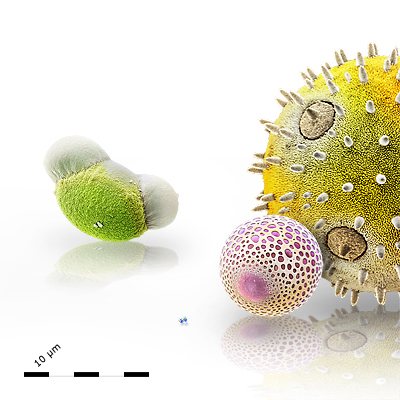New findings could help treat acute allergies

A discovery by researchers from the University of Bern and the Stanford University School of Medicine may pave the way for new treatments to stop potentially fatal allergic reactions.
According to the study, published online in the scientific journal Nature, researchers engineered a new molecule capable of stripping antibodies from receptor molecules on the surface of cells. Those receptor molecules are responsible for immune reactions triggered by outside allergens.
Researchers said their discovery could lead to the development of highly potent, fast-acting therapies for acute allergic reactions, which are often caused by exposure to ragweed pollen, bee venom or peanuts, for example.
When a potential allergen enters the body for the first time, some people respond by producing antibodies specific to the allergen. Those antibodies bind to the receptors on so-called mast cells, triggering an allergic response the next time the cells encounter the allergen.
Existing allergy treatments can block new interactions between the antibody and the cell receptors, but they are not designed to pry the molecules apart once they have formed a bond, according to the study’s co-author Alexander Eggel, who conducts basic immunology research at the University of Bern. That means allergic reactions can continue to occur, albeit less severely.
However, the newly discovered molecule can squeeze into the space between the antibody and the receptor and drive the two apart, perhaps making it possible to eradicate the allergy altogether.
“We were very surprised about our discovery because the bond between the antibody and the receptor is very strong,” Eggel told swissinfo.ch. “The mechanism we discovered has been unknown. Up until now, we did not know that it was possible to detach the antibodies from the receptors.”
As a result, immune researchers may have to re-test other molecules in their freezers to see what similar effects they may have missed due to the previously unknown molecule.
“Our discovery could lead to the development of new therapies such as, for example, a spray to be used before the start of the pollen season,” Eggel says.
However, he stresses that possible treatments are a long way from being developed or sold to allergy sufferers.
Each group of scientists involved in the study had a different approach to the same problem: the Stanford group used structural biology and biophysical approaches to probe the weak spots in the cell-antibody interaction, while the scientists at the University of Bern tinkered with the engineering of a molecule that would be able to block the antibody’s effects. Together, they identified the molecule that can actively block allergic response.

In compliance with the JTI standards
More: SWI swissinfo.ch certified by the Journalism Trust Initiative





You can find an overview of ongoing debates with our journalists here. Please join us!
If you want to start a conversation about a topic raised in this article or want to report factual errors, email us at english@swissinfo.ch.